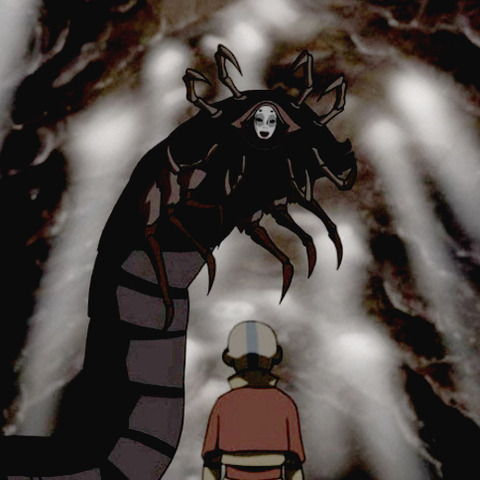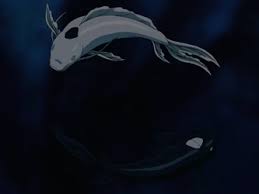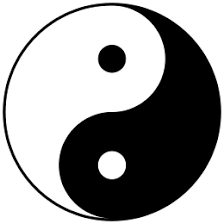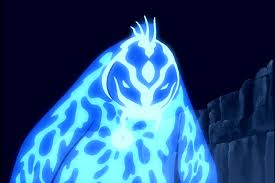Avatar is a wonderful show, but the season finale of season 1 is by far my favorite episode. It’s just so good. I’ll be talking about a couple of key scenes and characters and then I’m going to go into this crack theory that I have. Prepare yourself.
Table of Content
- Koh- Face Stealer
- Tui and La
- The Theory
Koh- Face Stealer

Aang journeys into the Spirit World to ask the spirits of the Ocean (La) and Moon (Tui) for help against the Fire Nation. Aang meets Roku, an avatar from one of his past lives, and Roku tells him that he should ask Koh, an old and wise spirit, for help. However, Koh is a face stealer and will take the face of anyone if they show any emotion. Roku warns Aang to keep a completely straight face when he asks Koh for advice. Roku says, “Show no fear or emotion.”
Aang meets with Koh, who takes the form of a large centipede-like creature. Koh says that he stole the face of a previous Avatar, Kuruk. Koh lured Kuruk’s bride, Ummi, into the spirit world and stole her face to punish Kuruk for his arrogance. When Kuruk tried to save his love he was unable to keep a blank expression and his face was stolen. Aang asks about the spirits and Koh says:
“Their names are Tui and La: Push and Pull and that has been the nature of their relationship for all time… you’ve already met them… Tui and La, your Moon and Ocean, have always circled each other in an eternal dance. They balance each other, push and pull, life and death, good and evil, Yin and Yang.”
Koh could represent a couple of things:
- Eternal knowledge and wisdom. His many “faces” are similar to Aang’s many lives. They make him all-knowing and wise.
- Aang’s own shifting perception of his identity, “reflecting” back at him in the form of this “monster.”
- Dangers of showing your emotions. The story of Kuruk and Ummi, of how Kuruk’s love was “stolen” and how his fear at her absence lead to his downfall, seems to have the moral of the importance of a “brave face” in times of peril. Aang had to keep a level head (face) to learn where the spirits were.
- How Koh wears other people’s emotions as a sort of mask and Aang wears a mask of unnatural neutrality. This scene could just be about the different types of “masks” people wear and how disposable they are.
Overall this scene was super fascinating and I’m only scratching the surface. Don’t take this scene at face value (ha ha).
Tui and La
There are countless references to Tui and La before they even make their literal appearance. A war drum has a design of a crescent moon and ocean encompassed in a circle. The chief of the Northern Water Tribe also asks the spirits for help before we meet them.
Tui and La, or as Koh confirms, Yin (Darkness) and Yang (Light) are referenced in this episode. Here’s a bit of back story on what Yin and Yang are:
Yin (darkness, negative, femininity, the Moon) and Yang (light, positive, masculinity, the Sun) are the two parts of the Taijitu. They are ancient Chinese (and broadly East Asian) Taoist symbol/s of balance. Here’s a quote about the purpose of the Taijitu:

“In Chinese philosophy Yin and Yang describe how seemingly opposite or contrary forces may actually be complementary, interconnected and interdependent… in the natural world.”
The Theory
When Tui and La became mortal beings they didn’t inhabit the forms of the Koi fish, as we assume, but the bodies of Katara and Zuko. Katara is Yin (The Moon) and Zuko is Yang (The Sun.) The Koi fish are the internal balance (the water and/or air parts?) inside of Aang who represents the Taijitu. Aang struggles to master Earth because it is the opposite of Air (his natural state) and Fire (because it is the most tumultuous element.) However, Water comes far more naturally to him. I don’t think Aang was found by The Water Tribe by coincidence. I think that while Air is his natural element, Water is like a sister element to him like Katara (if you’re a Zutara shipper like me, lol.) When the Moon (or air?) part of him is gone Aang can finally master Water in the form of the Koizilla (yes, that is its official name.)
Water could also be a representation of Aang’s subconscious mind (as water is commonly coded as the subconscious) and the Moon as his conscious mind (the Moon is thought of as the first “bender.” This might represent the active bending part of his mind pushing and pulling at his subconscious just as the Moon pushes and pulls on the tide.)
Perhaps the Avatar has elements of the four elements (see what I did there) inside of them. Earth is their core or attachment to the mortal world, Fire is their emotions and passions, Water is their mind and truth and, Air is their spiritual connection (kind of like the Chakras episode.) A physical manifestation of the balance of Aang’s mind could be the Koi. Anyway, this part of the theory is a bit convoluted, but who knows?
When Aang talks to Koh and exclaims “the Koi fish!” when he realizes who Tui and La are, Koh doesn’t correct or confirm Aang’s assumption. Koh also says “Your Moon and Ocean,” (your meaning Aang’s) and not “the Moon and Ocean,” or “Yin and Yang: The Moon and The Ocean,” which could support my theory.
Zuko is wearing white (lol he literally never does except in this episode) and that would perhaps be him embodying Yang. He also says, “You (Katara) rise with the Moon, I rise with the Sun.”
Katara and Zuko are seemingly opposites. Katara is a waterbender and Zuko is a firebender. Katara is calm and serene (most of the time anyways) and Zuko is, well you know, Zuko. They’re both chasing each other and both trying to hold onto or steal back the Avatar (the balance.) They seem constantly at war with each other and in the third season they finally make peace with each other. Finally learning that opposites can learn to be complementary.